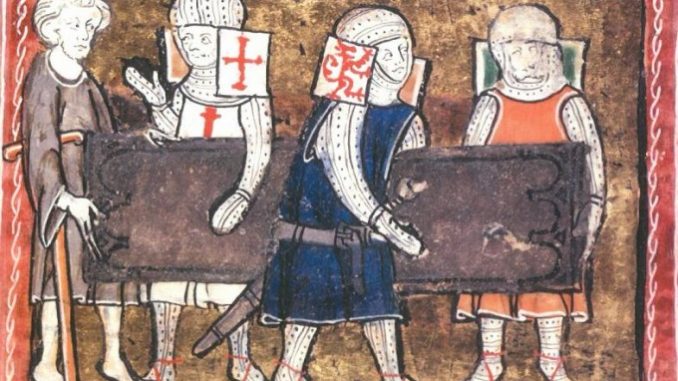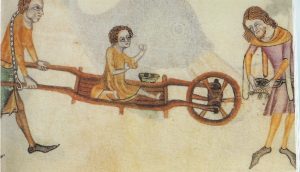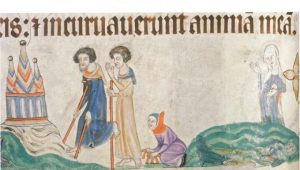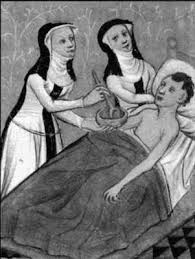
13 ways of building Disability history into lessons on the Middle Ages
Disability HIstory is a part of the KS3 Curriculum that is easily overlooked or covered without it being realised or recorded in departmental documentation. Within a broad and diverse key stage 3, it is important to provide an awareness of issues such as Disability. With 20% of the UK’s current population having a disability of some form, it is quite simply putting a history to the lives that your pupils are seeing around them. Integrating it is crucial if youngsters with a disability are to see positive role models; examples of adversity being overcome at various points in time, against a range of odds; and for all pupils to see how society has accepted, for centuries, that there is a duty and responsibility to care for and include people with disabilities.
- Let’s start at the end. For most people teaching Medieval History in England or Wales, it ends with the defeat of Richard III by Henry Tudor at Bosworth. Richard had scoliosis, a curvature of the spine that can be relatively mild, to severely debilitating. In the case of Richard, researchers used evidence from his remains and using experimental techniques (i.e. someone with the condition at the same stage) showed it was quite possible to fight in armour with Scoliosis.
- Teach about the Court of any of the monarchs of the period? Odds are that they had several fools and jesters. The selection of these was sometimes based on them being a ‘natural fool’. This is better documented within the Tudor era, but research shows it to have occurred earlier.

- From the late 13th century the responsibility for caring for natural fools was held by the crown. This worked two ways, the crown controlled any assets of the natural fool but were also supposed to ensure they were cared for.
- Another disability that can be referred to within lessons is the mental health condition that beset Henry VI and his French relative Charles VI. An accurate diagnosis is difficult given the lack of publicity and documentation about either case. However, it is known that Henry became unresponsive, catatonic, in nature and absent at times whilst not totally unaware of his surroundings.

- Leprosy is one of the most visual images of disability in the Middle Ages. In England, there were Leper hospitals and places where the inflicted went for healing waters. For example, the Healing well at Lyme Regis.
- A more common example of disability is demonstrated by Henry V. Disfigurement because of war. Henry’s own survival from an arrow in the face, whilst a Prince, is an amazing feat of ingenuity by his surgeons. It also acts as a reminder that each campaign of the period resulted in maimed and permanently disabled warriors. Official records include petitions for pensions by some of these men. Surely everybody teaches about at least one war and mentions the fact that people get disabled as a result?
- Nice little fun fact here but from the 12th century to dissolution there were more monastery/ priory hospital beds per capita than there are NHS beds per capita now. Granted it isn’t a fair comparison but it shows how significant caring for the ill and disabled was: plus there’s the hospitals, Leper houses and Bethlem.

- Medieval Hospitals. Why were they built if not to treat illnesses and disabilities? There are several to choose from in the British Isles, yet more if you include the Angevin Empire under the umbrella of ‘English’.
- Universities taught medicine and existed in England during the Medieval period. This enabled physicians to learn the ancient ideas of Hippocrates and Galen and these trickled down into community healing to some extent. There is also an element of Diversity within this as much of this knowledge was required in the West because of links, both peaceful and otherwise, with the Islamic States or further afield via trading routes.
- The Law. Do you think that Disability hit the legislative books recently? You’d be wrong. Disability is legislated on in England in the late 13th century. In theory, these laws protected people who could not protect themselves because of cognitive impairments.
- Bethlem Hospital was converted from an Almshouse into Europe’s first Mental Institution during the Medieval Period.
- Courts in England held the power to hold Inquisitions to determine somebody’s mental capacity. One example is the 1383 case of Cambridgeshire woman Emma de Beston. She was found to have, ‘the face and countenance of an idiot’.
- Epileptics were believed to be possessed and therefore only religious intervention would remedy epilepsy. Consequently, the church emancipated physicians in the late 14th century to permit full interventions on epileptics.
Want an overview of Disability History over a longer period? Mersey Care has a great timeline of Disability History here. (pdf file)
Leave a Reply
You must be logged in to post a comment.